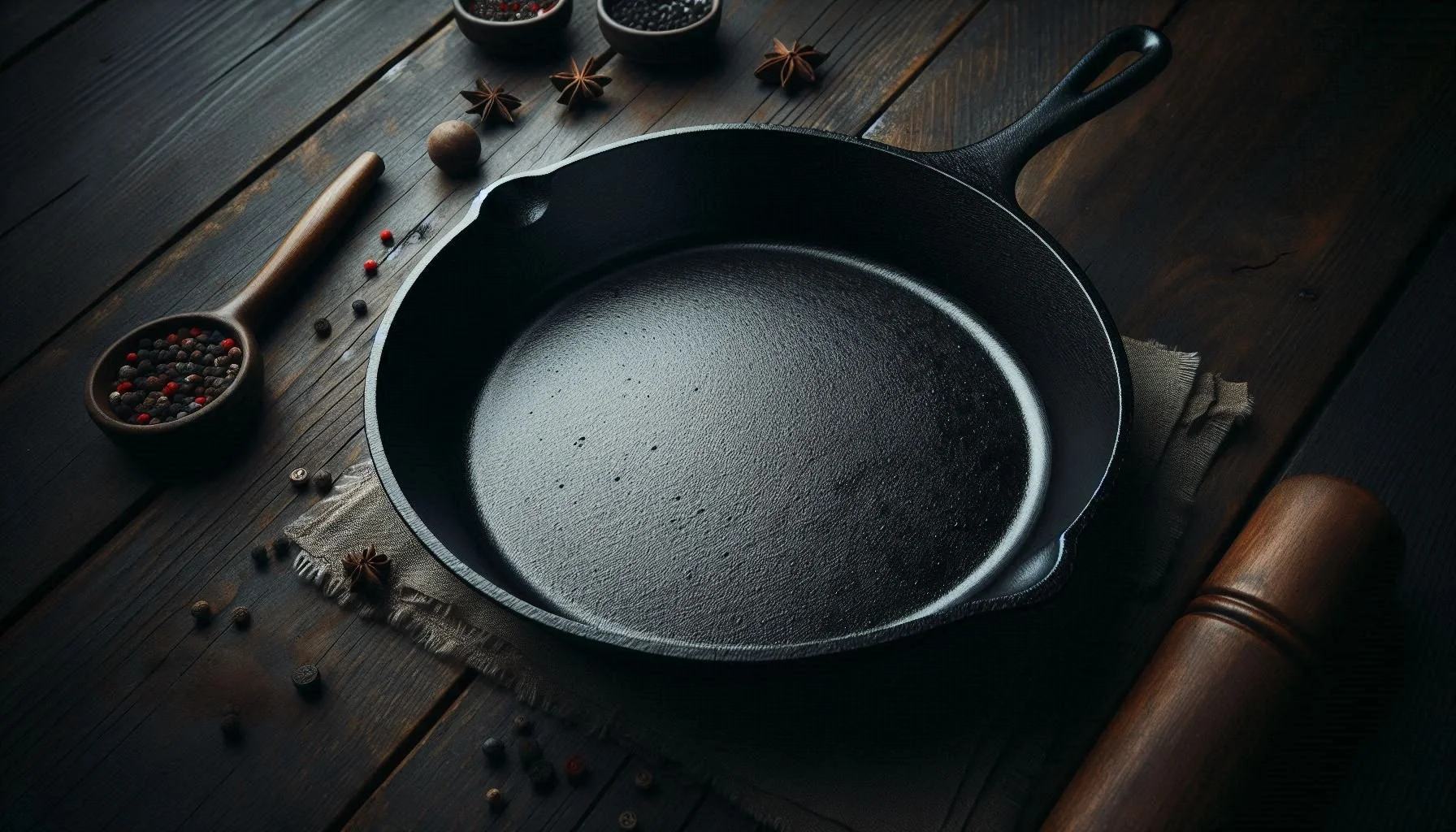
Care & Seasoning
Your one-stop guide to care & season like a pro
🍳 First Steps After Buying a Cast Iron Skillet
So you’ve snagged a new cast iron skillet—nice move. Whether it’s pre-seasoned or raw, here’s how to kick things off:
Inspect the surface: Look for factory residue, stickers, or wax coatings (common with raw cast iron). If it’s pre-seasoned, you’re halfway there.
Give it a rinse: Wash with warm water and a drop of mild soap. Yes, soap—just this once. Scrub gently with a sponge or brush to remove any residue.
Dry it immediately: Cast iron hates lingering moisture. Towel dry, then place it on a warm burner for a minute to evaporate any hidden droplets.
After your first wash—even before oven seasoning—rubbing in a thin layer of oil helps prevent flash rust and starts building that base coat. It’s a simple move that sets your skillet up for success.
🔥 Haven’t pulled the trigger and still thinking about purchasing your first skillet? Start here: The Ultimate Guide to American-Made Cast Iron Cookware. It’s a deep dive on the top American-made cast iron brands—craftsmanship, features, and what makes each one stand out.
🧼 Proper Cleaning Technique (Post-Cook)
Cast iron cleaning is a ritual. Here’s how to do it right:
Skip the soak: Never leave your skillet in water. It’ll rust faster than you can say “crispy potatoes.”
Scrape, don’t scratch: Use a chainmail scrubber, wooden spatula, or nylon brush to remove stuck-on bits. Salt and oil can help with stubborn spots.
Rinse and dry: Warm water only—no soap needed unless you’re breaking in a new pan. Dry thoroughly with a towel, then heat briefly on the stove.
Oil it lightly: After each cleaning, rub in a thin layer of oil (flaxseed, grapeseed, or canola work well). Buff until it looks dry—not greasy.
Worried about using soap? No worries—check out our Soap and Cast Iron post to put that age-old myth to rest, for good.
Seasoning builds that slick, nonstick surface and protects against rust. Here’s the method:
Preheat your oven to 450–500°F.
Apply a thin layer of oil all over the skillet—inside, outside, handle, everything.
Buff it dry with a lint-free cloth or paper towel. It should look matte, not shiny.
Place it upside down on the middle rack (foil or a baking sheet below to catch drips).
Bake for 1 hour, then turn off the oven and let it cool inside.
Repeat 2–3 times for a stronger base layer.
Over time, cooking fatty foods (like bacon or fried eggs) will naturally deepen the seasoning. In fact, regular use—especially with oils and animal fats—helps build up that protective layer. Every sizzle, sear, and roast contributes to a better-performing pan. The more you cook, the better it gets.
🔥 Not sure which oil to use? Check out our guide to the best seasoning oils for cast iron. It breaks down smoke points, durability, and flavor impact so you can season like a pro.



